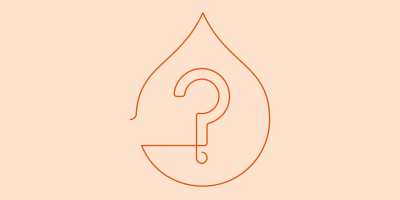
Collection
6 Benefits of a Customer Data Platform

Collection :
The digital transformation occurring in organizations has disrupted the status quo and comfort zones. But when you factor in evolving technologies and consumers with greater access to information, it makes abundant sense.
Why? Because people have product options a few keystrokes away, and if you don’t give them good alternatives right away, you lose business.
Fortunately, all the answers to gaining that business are already captured in customer data. Knowing how to store, organize, and use that data is an essential piece of the digital experience puzzle. Gone are the days of haphazardly collecting data and using it for half-baked marketing strategies. It’s time to be more deliberate.
This is where customer data platforms (CDP) come into play: a single source that collects and organizes customer data to inform strategies and transform digital experiences. A CDP enables organizations to examine customer data at a granular level to better create experiences that fit unique customer profiles.
Sounds awesome, but CDP benefits run even deeper.
Before diving in, it helps to get a brief overview of what a CDP should include:
- Unified customer data collection
- Unique customer profiles
- Personalization done better
- Better privacy and data protection
- Optimized omnichannel CX
- Improved business outcomes
Let’s explore how each capability can benefit your organization.
1. Unified customer data collection
Multichannel marketing is great for reaching customers where they are. With the number of channels increasing so rapidly, keeping congruent customer data at every touchpoint has become challenging. It's a two-edged sword because organizations want to meet customers at every touchpoint, but keeping those multichannel customer experiences consistent requires customer data to be well organized. A CDP connects those channels to build a unified customer database.
As customers leave data footprints across your organization's channels, a CDP can collect and keep them all together. In 2022, organizations around the world used an average of 130 software applications. That’s a lot of potential apps for customer data to fall through. That’s why the foremost benefit of a CDP is data-wrangling across a wide swath of platforms and channels.
2. Unique customer profiles
Piggybacking off unified data collection, CDPs take it a step further by creating single customer views. After data wrangling, a CDP ingests data unique to a single customer and builds a profile based on their behavior, information, purchase history, interest, etc.
Each time a customer — Bob, let’s say — has purchased a product, read a blog post, emailed customer support, browsed certain items, logged into your mobile app, or left something in his cart, it’s all filtered into one clean customer profile that summarizes everything Bob has done in relation to your brand. Using this single view, you can better understand how Bob ticks, what he may want next, and how best to guide him to what he wants.
3. Personalization done better
Having a snapshot of your customers makes it so much easier to personally tailor their digital experiences going forward. Gone are the days of personalization reduced to marketing emails with a personalized greeting. Modern personalization is knowing your customers so well that their buyer journey becomes a treat versus a task.
Or, as Steve Jobs put it, “Get closer to your customers. So close that you tell them what they need well before they realize it themselves.”
With a CDP, you can reach customers on any channel your organization appears in and create experiences that speak to them at the individual level — all because you’ve collected, organized, and used data portraits to inform your strategies.
4. Better privacy and data protection
You don’t have to search far to learn about organizations that have wildly mishandled sensitive user data. In 2023 alone, nearly 234 million people were impacted by data breaches.
With the amount of personal data flying around out there, organizations owe it to their customers to bolster security. Otherwise, it’s costly in more ways than reputation and compliance penalties.
A customer data platform (CDP) offers a secure central location to house data from multiple sources. The unified customer record discussed earlier allows multiple data points from different places that apply to a single customer and unifies them into a golden record.
Its goldenness is two-fold: 1) It pulls data from disparate systems and brings it all together to store. 2) Should a customer wish their data be forgotten, an organization can delete the golden record from the CDP and identify any connected downstream systems that need scrubbing.
Data compliance and trust go hand-in-hand with how customers should perceive your brand. Don’t sleep on that!
5. Optimized omnichannel customer experience
Customer data lives in a bunch of different places. A CDP offers a single source for storing, managing, and activating data strategies on all the digital channels your organization uses, facilitating better omnichannel customer experiences that power the modern digital landscape.
Think of it this way: You have your data on an organization's website, Instagram, and mobile application. A CDP has collected all that data into a unified profile that is all YOU. With that profile, marketers can serve content tailored to you on each of those systems (and more), giving you a customer experience fully informed by your own actions, likes, behaviors, etc.
Case in point: Have you ever gotten an advertisement so well targeted you thought a company was listening? They weren’t. They’ve got omnichannel customer experience optimization down to a data-backed science.
6. Improved business outcomes
Can’t leave out the fact that better customer data practices is just good business. We talked about data falling through the cracks earlier. Not only will those gaps likely cause a bad customer experience, but they’ll lose you money, too!
Covering your bases with a CDP keeps your digital experience game airtight. It tells customers that you’re paying attention to them, and you’re building customer experiences tailored to their needs. Indeed, 80% of consumers are more likely to buy from brands that offer more personalized experiences, proving the point that customers who feel valued are likely to translate into monetary value. It all starts with using their data to figure out how to design experiences that set you apart from competitors.
What next?
Rapid technological advances mean organizations must keep data organized in real time. At the same time, customers know there’s a lot of competition for their attention, so they expect more accurately personalized actions from organizations vying for their business. It’s crucial for organizations to discuss customer data strategy and to have a CDP implementation plan. Properly implemented, a CDP is the perfect place to organize and balance customer data influx and to use it to fashion more personalized customer experiences.
And, when people have a world of options at their fingertips, data-informed personalization is an important differentiator. If that sounds too good to be true, we’d love to show you a demo that’ll change your mind.



